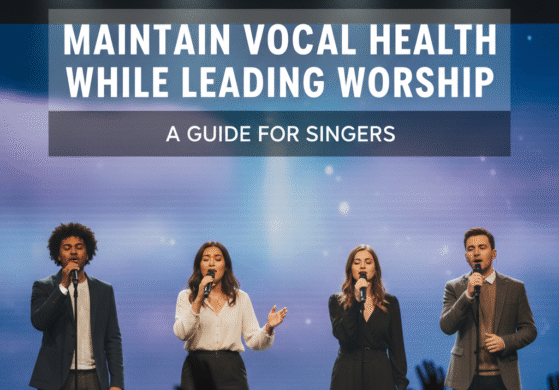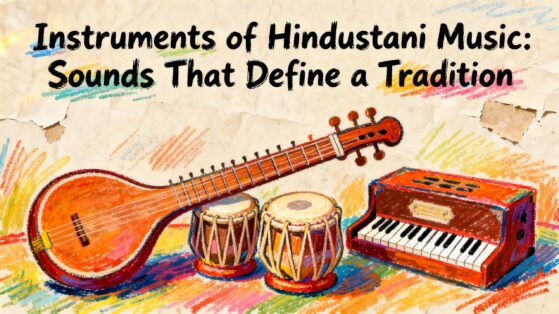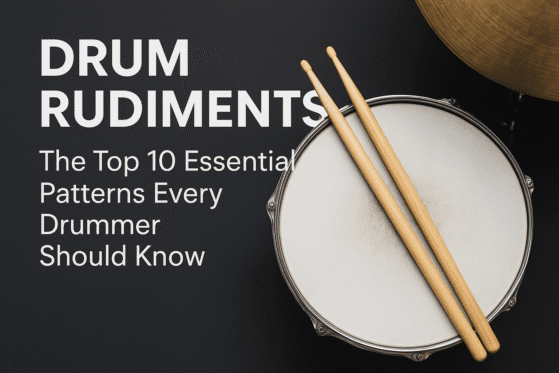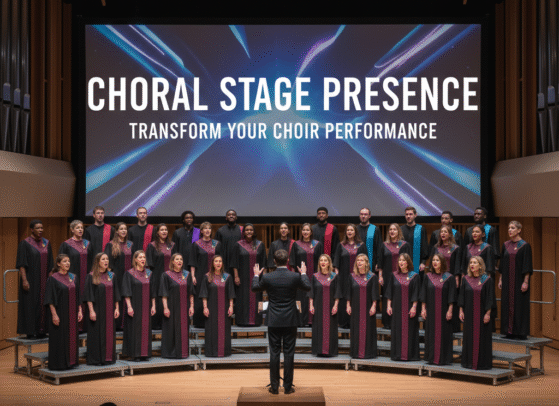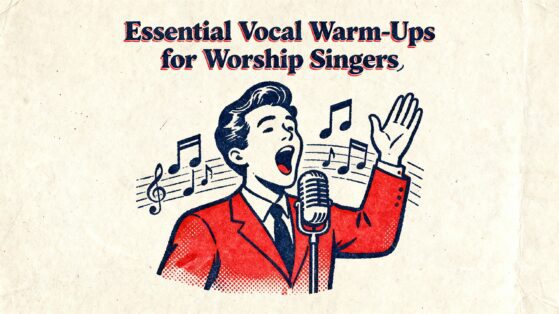Breathwork & Beats | Syncing Pranayama with Rhythm
Breath is life. Rhythm is movement. When we bring the two together—through pranayama (yogic breath control) and music—we unlock a powerful synergy for calmness, clarity, and creative flow.
Whether you’re a musician, a yogi, or simply someone seeking inner balance, syncing your breath with rhythm can elevate your mental and emotional state, while also enhancing musical intuition. In this blog, we explore how the ancient practice of pranayama can be aligned with beats to build mindfulness, sharpen focus, and deepen your connection to both music and self.
1. What Is Pranayama? A Quick Overview
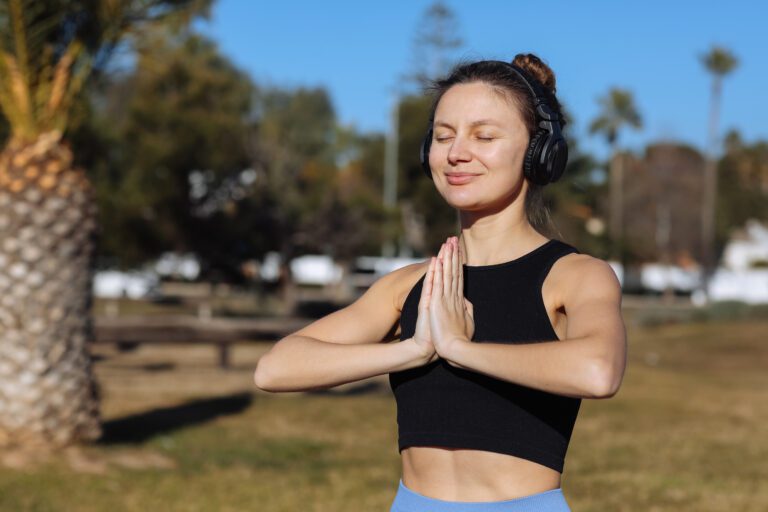
Pranayama is a Sanskrit word meaning “control of life force.” It refers to yogic breathing techniques that regulate the flow of prana (energy) in the body.
Some foundational types of pranayama:
- Nadi Shodhana (alternate nostril breathing): Balances both hemispheres of the brain
- Ujjayi (victorious breath): Creates internal heat and focus
- Bhramari (bee breath): Calms the nervous system using gentle humming
- Kapalabhati (skull-shining breath): Energizing and detoxifying
These techniques regulate the nervous system, enhance mental clarity, and deepen mind-body awareness.
2. The Science of Rhythm: What Happens When You Hear a Beat
Music affects your brainwaves. When you listen to a steady beat, your breathing, heart rate, and even thoughts can entrain to that rhythm.
Rhythm:
- Improves cognitive performance
- Enhances focus and memory
- Regulates heart rate variability
- Induces meditative and flow states
This is why drumming circles, chanting, and even metronome breathing have therapeutic benefits. Combining rhythm with conscious breathwork takes it a step further.
3. The Connection: How Breath and Beat Align
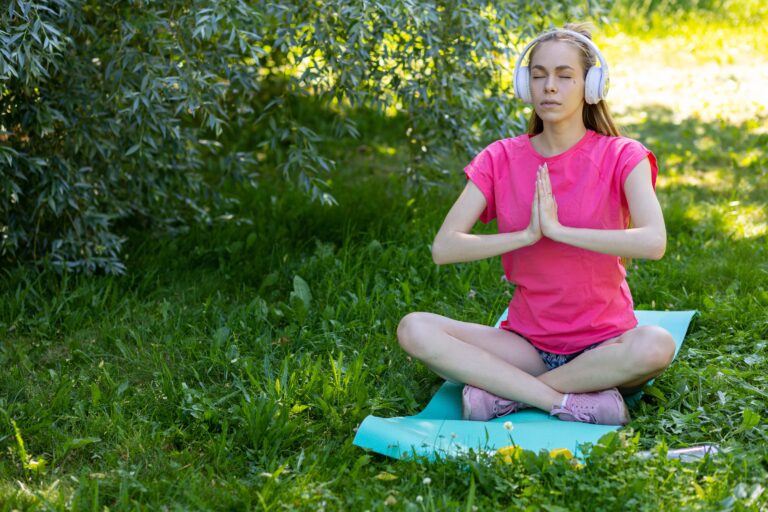
When you pair pranayama with rhythm, you’re creating internal coherence—a state where the breath, heart, and mind are in sync.
For example:
- Inhale for 4 beats, exhale for 4 beats: Builds balance and reduces anxiety
- Inhale for 4, hold for 4, exhale for 4, hold for 4 (box breathing): Boosts focus
- Exhale with a hum or chant on a steady beat: Induces relaxation
This union helps you:
- Feel grounded during music practice or performance
- Improve timing and phrasing as a vocalist or instrumentalist
- Shift emotional states intentionally using breath + sound
4. Breathwork Techniques for Musicians
✅ 1. 4-Beat Box Breathing (Good for Practice Sessions)
- Inhale: 4 beats
- Hold: 4 beats
- Exhale: 4 beats
- Hold: 4 beats
> Repeat for 3–5 minutes before a music session.
✅ 2. Vocal Humming with Rhythm
- Inhale deeply
- Exhale on a hum (“mmmm”) for 8 beats
- Increase the beat count as your control improves
> Great for warm-ups and calming stage nerves.
✅ 3. Breath-and-Tap
- Inhale: Tap your hand or finger to a beat (metronome or music)
- Exhale: Tap faster or with a clap to create energy
> Excellent for singers and percussionists to link breath and timing.
5. Why It Works: Benefits of Syncing Pranayama with Beats
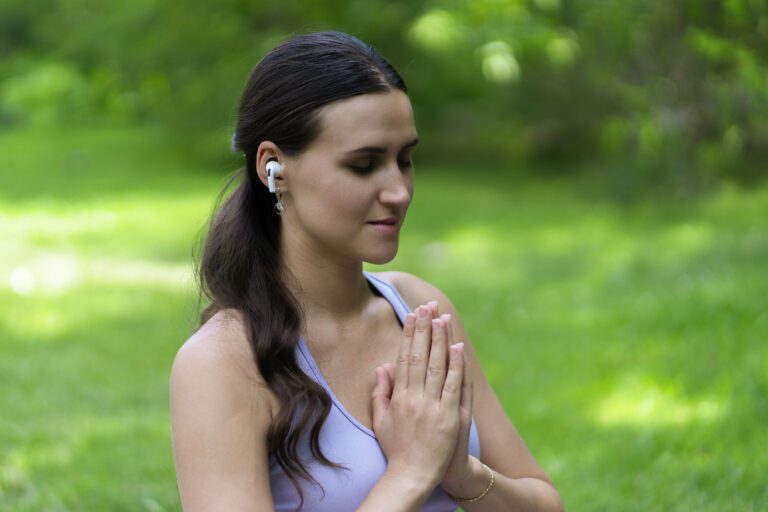
🎵 Mental Benefits
- Increased focus and presence
- Reduced performance anxiety
- Improved emotional control
🎵 Physical Benefits
- Better lung capacity and breath control
- Enhanced vocal stamina and resonance
- Lowered blood pressure and heart rate
🎵 Creative Benefits
- Boosts inspiration and expression
- Encourages improvisation and musical flow
- Deepens mind-body-sound connection
6. Creating Your Own Breath & Beat Routine
🧘♀️ Simple 5-Minute Routine:
1. Put on soft, rhythmic instrumental music (60–80 bpm)
2. Sit in a relaxed posture
3. Do 3 rounds of box breathing to center yourself
4. Begin vocal humming to the beat
5. End with silent breathing while staying with the rhythm
🔁 Customize:
- Use tabla, lo-fi beats, or handpan tracks
- Adjust tempo to match your energy: slow for calm, upbeat for activation
- Practice before performances or songwriting sessions
7. Breathwork in Global Traditions: A Musical Insight

Cultures worldwide have linked breath and sound for centuries:
- Indian Classical Music: Breath is trained along with raga phrasing
- African Drumming: Breath syncs with hand and foot patterns
- Gregorian Chanting: Long breaths sustain sacred syllables
- Tuvan Throat Singing: Controlled airflow creates layered tones
This shows how universal and timeless the connection between breath and rhythm really is.
8. Guided Sessions: Where to Learn More
If you’re curious to explore further, look for:
- Pranayama + Music classes on YouTube or meditation apps
- Online voice teachers who combine vocal warmups with breathwork
- One-on-one music sessions that include holistic coaching
About The Mystic Keys – Where Breath Meets Music
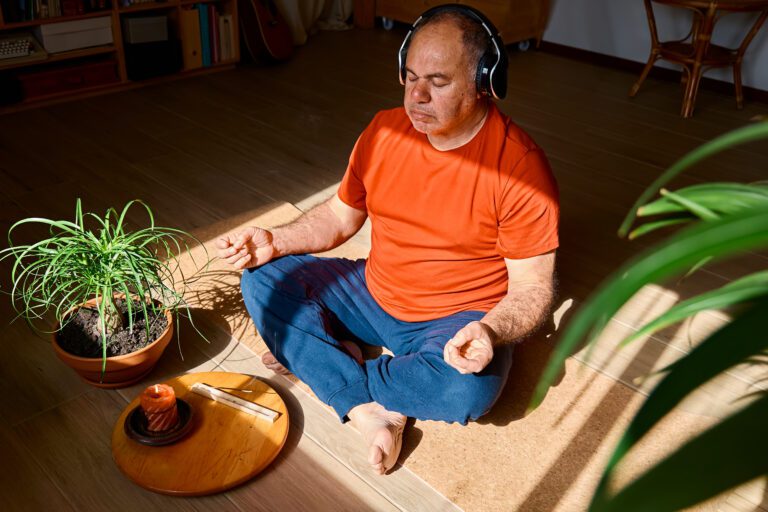
At The Mystic Keys, we offer more than just music lessons—we provide a complete musical journey. Our one-on-one online classes combine expert guidance with flexible, personalized learning. From vocal techniques and breath control to performance confidence, we help students connect with music on a deeper level.
🎵 Learn Western and Indian music
🧘♀️ Build vocal stamina through breathwork
📚 Receive lesson notes, recordings, and tailored practice plans
📞 Zoom-based, flexible scheduling
🎓 Trinity-certified and Grade 8 expert teachers
Unlock your voice, your rhythm, and your inner harmony with us.
🌐 Visit us: The Mystic Keys
Conclusion: Breathe, Feel, Express
When you sync your breath with rhythm, you’re not just practicing music—you’re tuning into your inner world. Whether you’re using pranayama to calm your nerves, improve focus, or enhance musicality, it’s a tool that transforms your mind, body, and art.
Take a moment today. Play a beat. Breathe in. And let your breath become part of the rhythm.
Explore Western Vocals Lessons Online designed to help you improve your musical timing with techniques like metronome practice, tapping, and rhythm drills for better accuracy.
For more information and exciting resources about learning music, visit our website at The Mystic Keys. For more music content and exciting offers follow us on
Facebook, Instagram, YouTube, LinkedIn, Twitter, Pinterest, Reddit, Threads,
and Quora.
Related Blogs
Playing a musical instrument is a deeply rewarding pursuit, blending artistry, skill, and discipline into a lifelong journey. Whether you’re just starting out or have years of experience, there’s always room for growth.
Choosing the right instrument is one of the most exciting steps in a beginner’s musical journey. Whether you’re a parent enrolling your child, a teenager chasing a passion, or an adult reigniting an old dream, the first instrument you choose plays a big role in your learning experience.
When starting your musical journey, choosing the right instruments best for beginners is crucial to ensuring an enjoyable and rewarding learning experience. Selecting an instrument that suits your personal preferences, physical abilities, and musical goals can significantly impact how motivated you stay and how quickly you progress.



